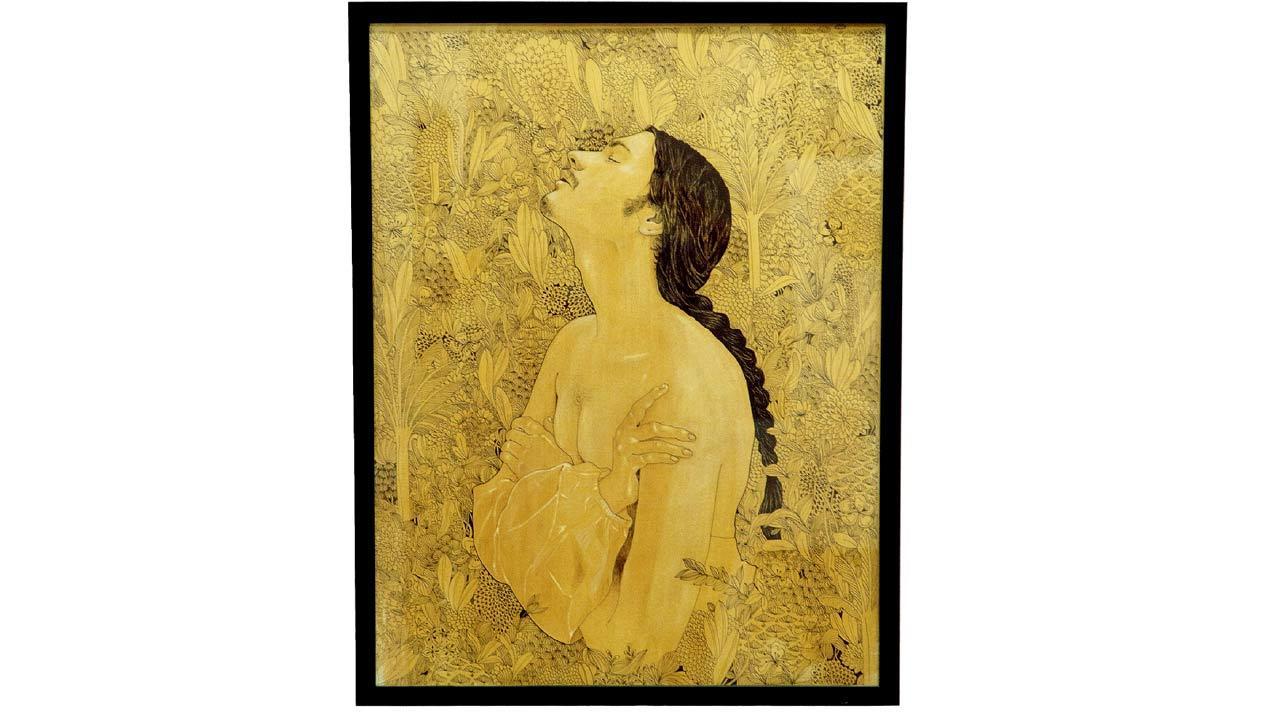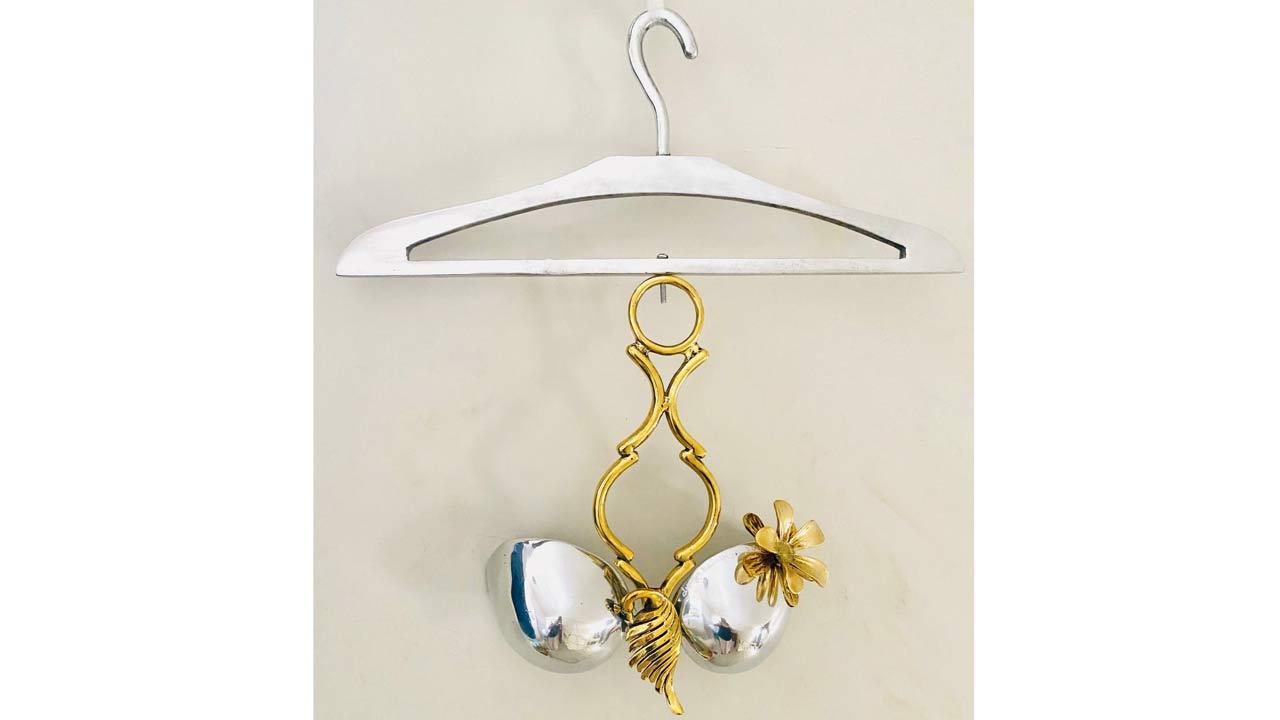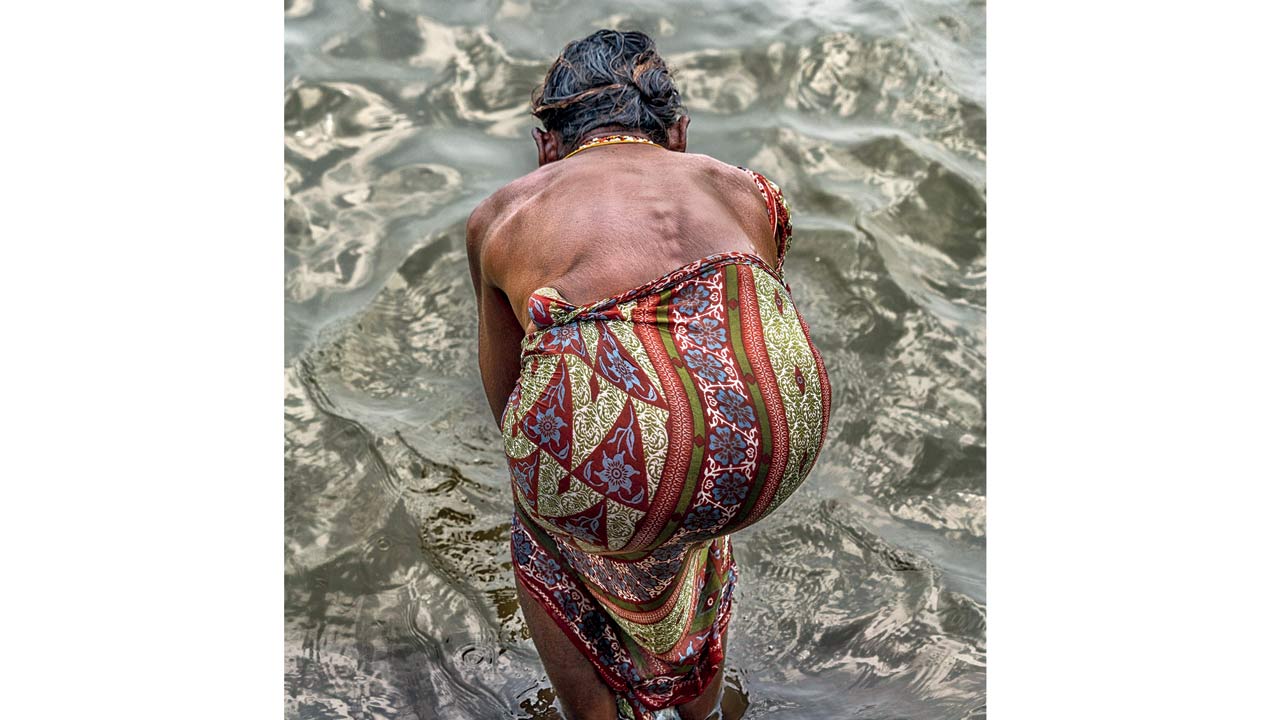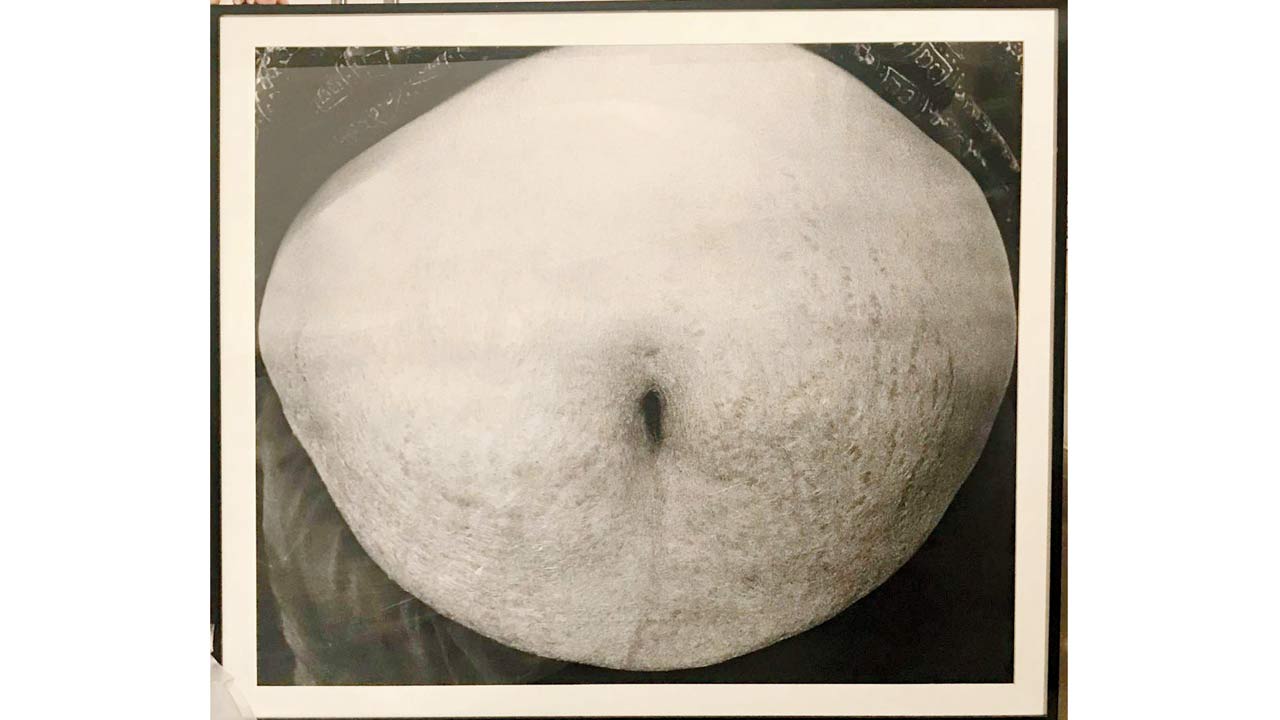A new exhibit tries to decode the meaning of the “feminine gaze”, keeping the focus on the body—that should be represented, not fetishised

Among the 11 artists featured in the exhibition is Geet Jangid, who presents a queer perspective. This self-portrait, titled Becoming One (pen on tea-toned paper), is a commentary on how the male gaze can be engaged with and what is what is seen as desirable by society
Women grow up experiencing the “male gaze” all through their lives, whether it’s in everyday interactions or in art. In art, it was British film theorist Laura Mulvey who, in her 1973 essay Visual Pleasure and Narrative Cinema, pointed out how women are depicted through a voyeuristic and often erotic lens, reducing them to objects or a mere fantasy for the viewer’s pleasure. From the famed 16th-century Venus of Urbino painting—which depicts a young bride in the nude, reclining on a bed while seductively holding the viewer’s gaze—to the modern-day Wonder Woman, who is skimpily clad compared to her male superhero peers, Mulvey’s words ring true to this day: “Male gaze projects its fantasy onto the female figure, which is styled accordingly”.
ADVERTISEMENT
A new exhibition at Colaba’s Apre Art House explores how contemporary Indian artists are shifting the perspective from that of objectification to empowerment. The exhibit, titled Alternate Gaze, features artwork by 11 artists—both men and women—across several media, such as photography, sculptures and paintings.
 Vasundhara Tewari Broota’s Eye of the Tiger is a commentary on the fiery eyes and spirit of her daughter
Vasundhara Tewari Broota’s Eye of the Tiger is a commentary on the fiery eyes and spirit of her daughter
Writer-curator Georgina Maddox says, “I’ve always been interested in the idea of the male gaze; I had studied it in Feminist studies at college and in my post-graduation studies. I was intrigued in how you can own something with your gaze, and how most imagery is played to the male gaze. It’s really important to have other gazes. We wanted to show how women artists look at bodies, their own and that of others too. We also wanted to highlight the queer male perspective that questions the [traditional] idea of masculinity.”
Among the featured artists is Mumbai-based Shakuntala Kulkarni, who is showcasing digital prints of her 2001 multimedia installation, Of Bodies, Armor, and Cages. In the photographs, women stand tall and proud in sculptural armour crafted from cane. At first glance, it might seem that the armour is protecting the woman, even elevating her to a warrior goddess. But a closer look reveals the tension in the woman’s body, and the armour takes on the appearance of a cage, both protecting her and constricting her.
 Kareena by Durga Kainthola
Kareena by Durga Kainthola
“Shakuntala’s work projects the heroic female, whether it’s her installations and photographs, or her paintings, which evoke the cave paintings from humankind’s hunter-gatherer days. Initially, the stick figures in the cave paintings would all be interpreted as male, but we now know that they included women hunters too. Shakuntala’s paintings [from the series And When She Roared The Earth Quaked; acrylic on glass and fabric] hark back to those ancient cave paintings of hunters with their spears and bow and arrow. It’s a commentary on how ‘primitive’ societies seek to restrict women’s role.”
New Delhi-based Durga Kainthola’s sculptural installations on the other hand, are a more tongue-in-cheek take on the male gaze, as well as a tribute to female icons such as Helen and Kareena Kapoor. Her sculpture titled Kareena is a petite brass and aluminium bikini that is a play on the Bollywood star’s size zero days. “The way it has been installed is a humorous commentary on this fantasy of the size-zero woman. It’s represented as not an actual woman but just a bikini or a frame to fit into; the person inside is replaceable—they just have to decide to fit themselves in it. It pulls the veil off the idea of what is erotic,” says Maddox.
 Sacred Waters by Avani Rai
Sacred Waters by Avani Rai
Geet Jangid, a queer artist from New Delhi, on the other hand, presents an entirely different narrative. “His piece Sum [acrylic on canvas] shows a nude male with a sitar in his hand, looking back plaintively at the viewer. It’s a self-portrait that is also a commentary on how the male gaze can be engaged with—what is seen as erotic, what is seen as desirable and acceptable by society,” says Maddox.
The exhibition features several other works, each one adding new perspectives to the conversation, such as Vasundhara Tewari Broota’s Eye of the Tiger (oil
on canvas), a portrait of her daughter’s fiery eyes, or Sheba Chhachhi’s Notes to the Body triptych, featuring intimate photographs of a woman’s full belly, underarm hair and feet—a perspective that plays on the very edge between what society considers either erotic or unacceptable.
 Notes to the Body by Sheba Chhachhi
Notes to the Body by Sheba Chhachhi
The showcase, which is on till November 2, is an important catalyst for conversation around how we view all desi bodies—be it men or women—whether it’s our self-consciousness about body hair, or how we view chubby or aging bodies.
 Subscribe today by clicking the link and stay updated with the latest news!" Click here!
Subscribe today by clicking the link and stay updated with the latest news!" Click here!







